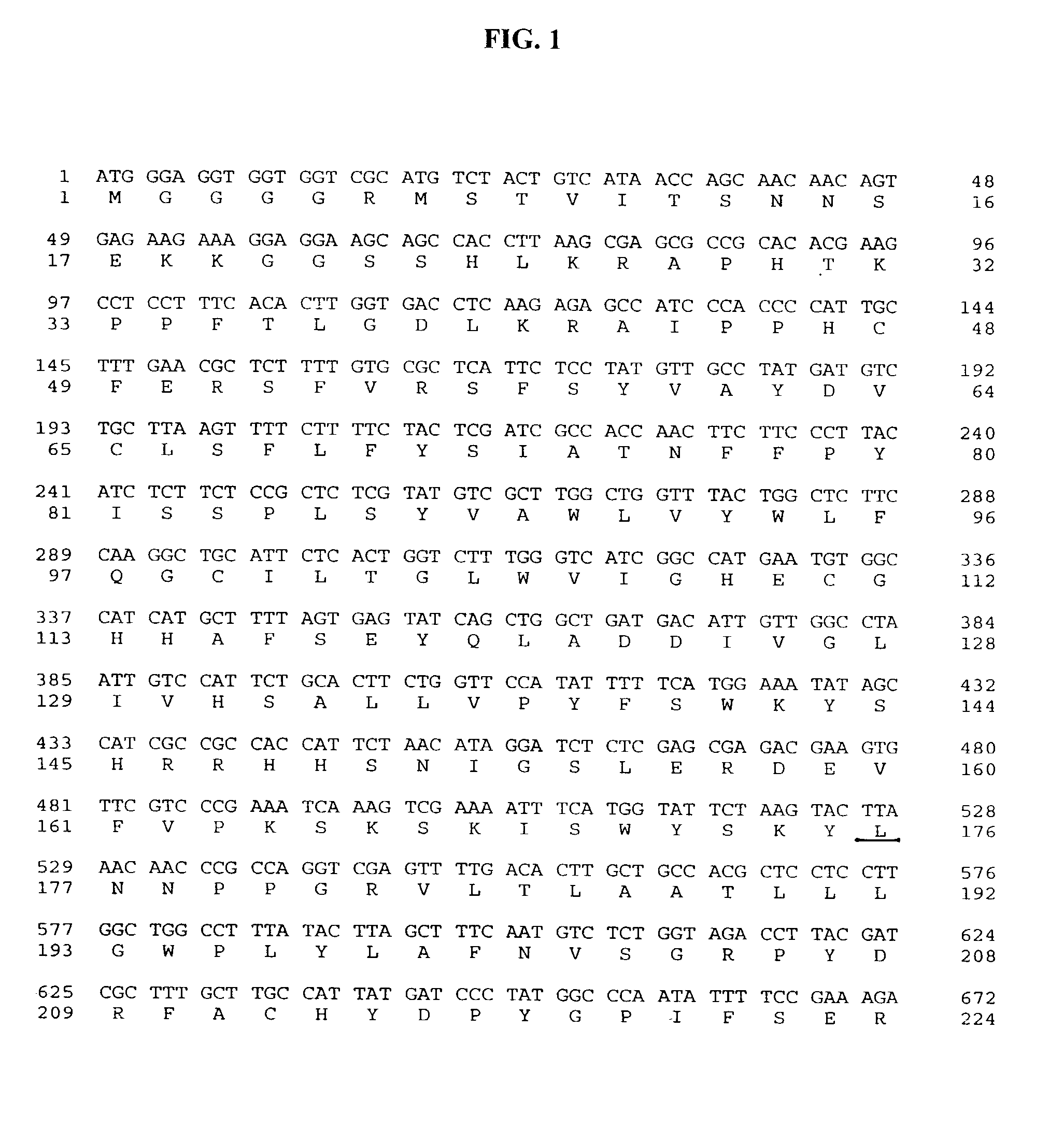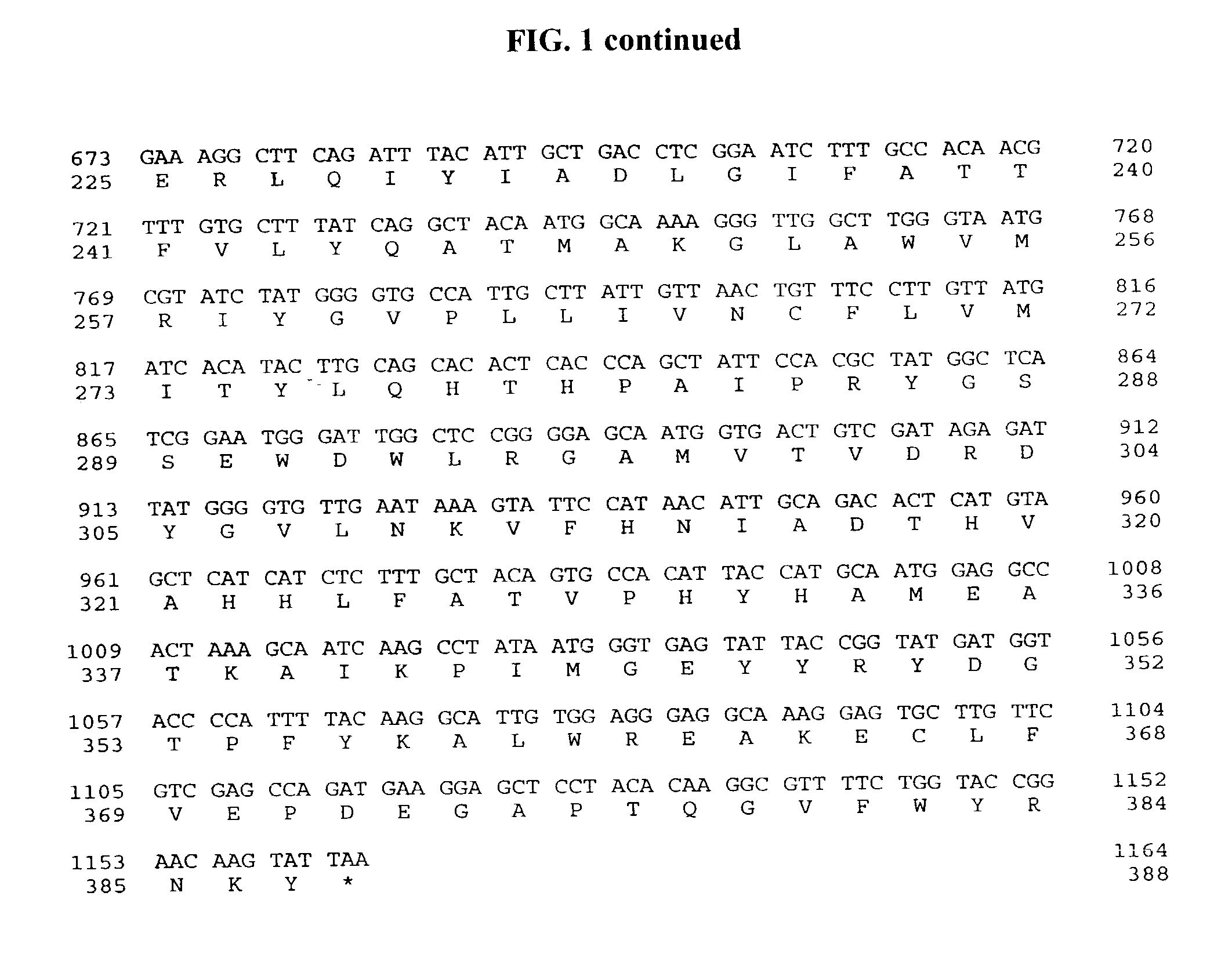Isoform of castor oleate hydroxylase
a technology of isoform and hydroxylase, which is applied in the field of isoform of castor oleate hydroxylase, can solve the problems of few favorable agronomic characteristics of castor, and achieve the effect of increasing the rate of seq id
- Summary
- Abstract
- Description
- Claims
- Application Information
AI Technical Summary
Benefits of technology
Problems solved by technology
Method used
Image
Examples
example 1
Oleate Hydroxylase Gene Isolation and Use in Plant Transformation
[0233] The oleate hydroxylase isoform of the present invention was isolated from natural source castor cDNA corresponding to seed RNA. Its sequence was determined, and discovered to be novel with respect to sequences previously reported. The enzyme of the present invention carries a point mutation at codon 176 that encodes a leucine in place of the serine present in the previously described gene. Therefore, the novel oleate hydroxylase isoform is referred to as CasOH S176L.
[0234] Isolation of castor hydroxylase isoform CasOH S176L
[0235] RNA was extracted from EJW 1993 and FVD 1990 castor endosperm (which are two separate batches of endosperm stored at -80.degree. C.) using Biotechniques 1990 8:148 protocol modified for plants. Four First Strand cDNA Synthesis reactions were performed using BRL SuperScript. First Strand cDNA from the first two reactions were pooled and subjected to PCR using Advantage Polymerase (Clonte...
PUM
| Property | Measurement | Unit |
|---|---|---|
| Nucleic acid sequence | aaaaa | aaaaa |
Abstract
Description
Claims
Application Information
 Login to View More
Login to View More - R&D
- Intellectual Property
- Life Sciences
- Materials
- Tech Scout
- Unparalleled Data Quality
- Higher Quality Content
- 60% Fewer Hallucinations
Browse by: Latest US Patents, China's latest patents, Technical Efficacy Thesaurus, Application Domain, Technology Topic, Popular Technical Reports.
© 2025 PatSnap. All rights reserved.Legal|Privacy policy|Modern Slavery Act Transparency Statement|Sitemap|About US| Contact US: help@patsnap.com



